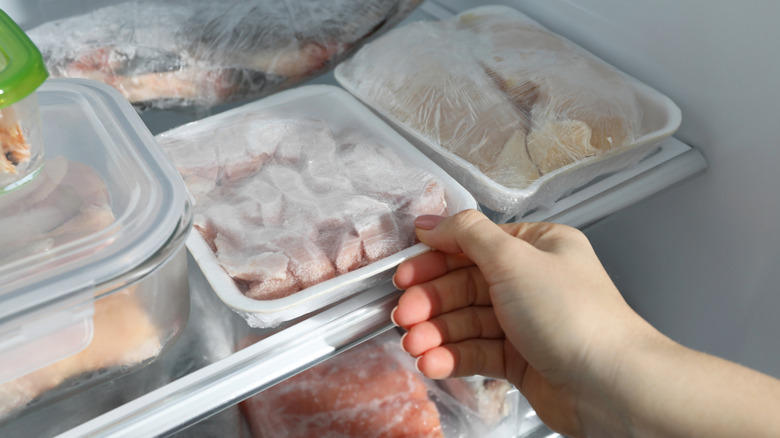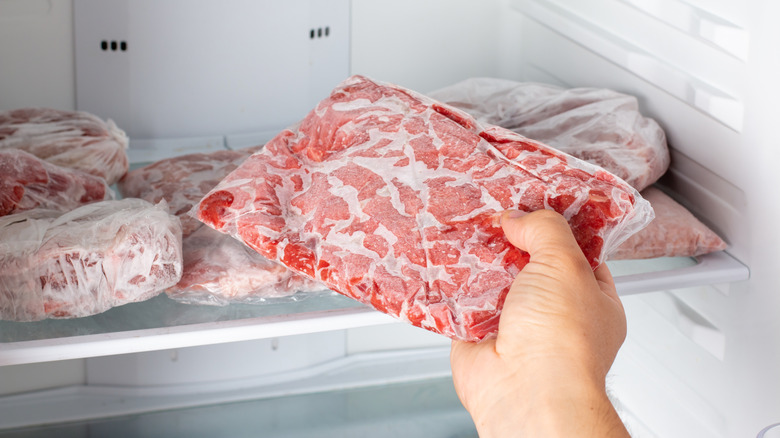How Long Does It Take To Thaw Frozen Meat In The Fridge?
While there are a few ways to defrost raw meat, experts agree that the safest method is in the refrigerator. Thawing frozen meat in the fridge allows it to defrost while keeping it out of what is known as the "danger zone" — the temperature range of 40 to 140 degrees Fahrenheit. Bacteria grows the fastest on food in this range, which is why it's not recommended to thaw frozen meat on the kitchen counter. Defrosting meat in the refrigerator takes some planning since, while the safest, it is not the quickest method. Luckily, there is an easy rule to follow to help you determine how far ahead you need to transfer frozen meat to the fridge. In general, it takes about 24 hours per every 5 pounds of meat.
Smaller portions or thinner cuts of meat could take less than 24 hours to thaw, while very thick cuts and larger items (think: an entire turkey) will take longer than a day (same goes for thawing a whole chicken). For example, a 15-pound turkey takes about three days to thaw (one day per 5 pounds). The temperature your refrigerator is set to can also affect the defrost time. Most refrigerators are set to 35 to 38 degrees Fahrenheit, but a range of 33 to 40 degrees is considered safe for your fridge. If your fridge is set on the lower end, it will take longer to defrost meat, while refrigerators set closer to 40 degrees Fahrenheit will thaw meat a tad faster.
Where you should place meat in the fridge to defrost
Many people don't realize that you should actually put some thought into where you place food in the refrigerator. Indeed, there are refrigerator storage mistakes that could ruin your food. The bottom shelf of your fridge is generally considered the best spot to thaw frozen raw meat for two reasons. Firstly, the bottom shelf is the coldest part of the fridge because cold air sinks, while hot air rises. Moreover, the back of the shelf is typically colder because it is farthest from the door (when you open the refrigerator door, food nearest to the door is exposed to the outside air).
Secondly, no matter how well the frozen meat seems to be sealed, there's always the possibly that it could leak. Thus, to avoid raw meat juices dripping onto your other food, it's best to store it on the bottom shelf where you can better contain the mess. Additionally, always place the frozen meat on a plate or in a bowl to catch any leaks.
According to the USDA, if you've defrosted meat in the fridge and your dinner plans change, you can safely refreeze it for later. Otherwise, after your ground meat, poultry, seafood, or stew meat has thawed in the fridge, it should be cooked within one to two days. Meanwhile, red meat like beef, steak, or lamb chops can remain in the fridge for three to five days before cooking.

